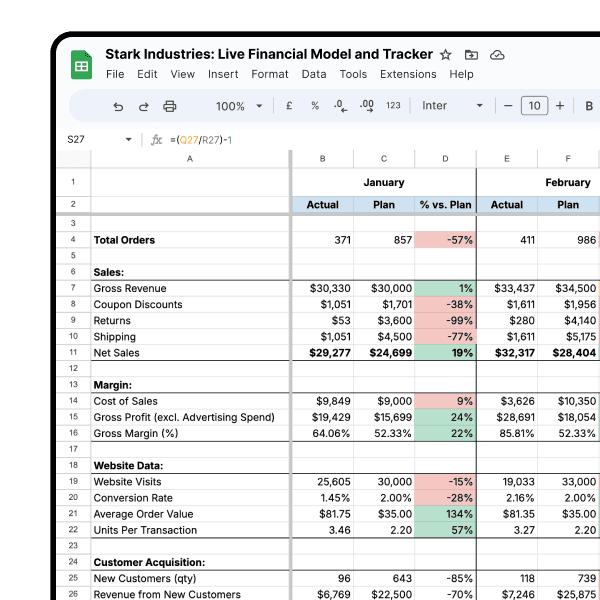Reporting & Analysis
04.10.2024
TLDR
Shopify exports can mistakenly include discounts on fully refunded orders, inflating your costs and skewing financial reports. Airboxr corrects this by removing discounts from fully refunded orders, providing more accurate data. This helps prevent errors and ensures better financial decision-making for your store.
Keeping accurate financial records is crucial for any online store. It's how you know if your business is healthy and growing. But there's a tricky issue many Shopify stores face when preparing financial reports: how discounts on refunded orders are handled.
When you export data from Shopify, it doesn't always remove discounts on canceled orders correctly. This might seem small, but it can cause big headaches. It can make your costs look higher than they are and your profits lower.
In this post, we'll break down how Shopify and our app, Airboxr, handle discounts on refunded orders. We'll explain why this matters for your bottom line and give you practical tips to keep your financial reporting accurate. Understanding this issue is key to avoiding pitfalls and maintaining more accurate books.
Understanding Shopify and Airboxr Discount Handling
Here's a breakdown of how Shopify and Airboxr handle discounts for refunded orders:
Shopify
In the Shopify admin view, discounts disappear when an order is fully refunded. This makes sense - if the order is canceled, the discount shouldn't count.
For partially refunded orders, Shopify keeps the discounts visible. This is because part of the order was still completed.
But here's the tricky part: when you export data from Shopify, it still shows discounts on fully refunded orders. This is where things can get confusing.
Airboxr
Our reports remove discounts on orders that have been fully refunded, just like the Shopify admin view does.
For partially refunded orders, we keep the discounts visible, matching what Shopify does.
Improve your DTC game. Sign up for weekly tips.
Impact of Discount Handling on Financial Reporting
Why does this matter? Well, if you're using Shopify's exported data for your financial reports, you might be counting discounts that shouldn't be there. This can make it look like you're giving away more discounts than you are, which can throw off your numbers.
For example, let's say you had a $100 order with a $20 discount, but the customer canceled and got a full refund. In Shopify's export, that $20 discount might still show up, even though the sale didn't happen. If you're not careful, you could end up thinking you gave away $20 more in discounts than you did.
This difference between what you see in Shopify's admin, what's in the export, and what Airboxr shows can lead to confusion and mistakes in your financial reporting. That's why it's so important to understand how each system handles these discounts, so you can make sure you're working with the right numbers.
By using Airboxr for your financial reporting, you can get a clearer, more accurate picture of your store's financial state. It helps bridge and correct some errors between what you see in Shopify's admin and what appears in exports, ensuring you're making decisions based on reliable data.


